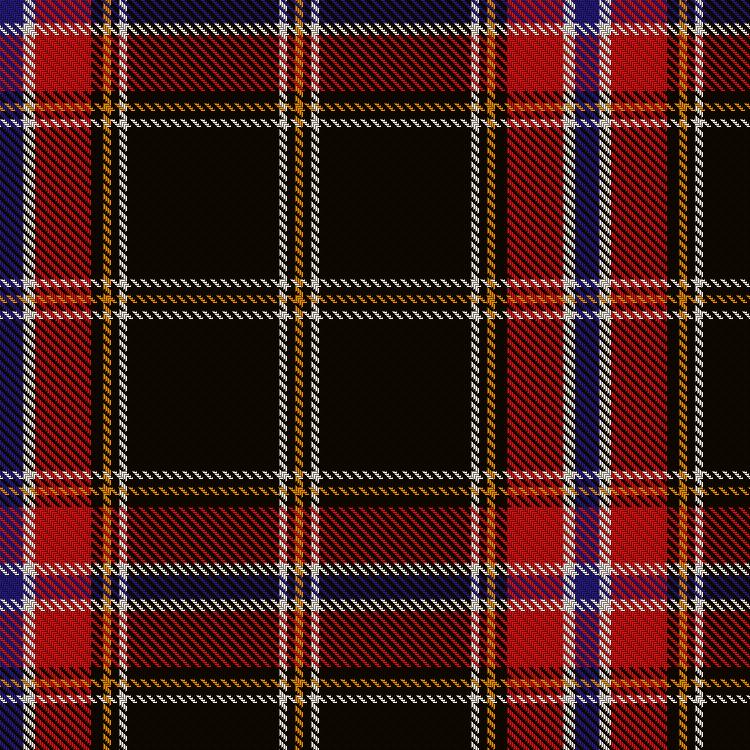Click the tartan to view its entry in The Scottish Registers of Tartans which includes registration details, restrictions, and registrant information.
Unregistered tartans may link to one of the web's online design environments for similar information.
For any questions about reproduction of designs or weaving of these tartans, please contact the registrant directly or via this website.
Winter Auroras
"Aurora had but newly chased the night,
And purpled o'er the sky with blushing light."
~John Dryden (1631-1700), Palamon and Arcite
While the long and dark winter nights especially near the arctic circle, can dampen the spirits, the arrival of the shimmering aurora borealis can brighten skies and light the eyes with their dancing and shimmering array of colours. The multi-coloured moving glow comes from interactions between fast moving electrons from the earth's magnetosphere and oxygen and nitrogen molecules in our upper atmosphere. Collisions of particles result in the glow of many colours: greenish-yellow or red light from oxygen, blues from nitrogen; and purple, pink, and white appear from various colour mixing! Many cultures have their own unique mythologies to explain the auroral visitations. The Greeks believed that the goddess Aurora was the sister of Helios and Seline, the sun and moon respectively, and that she raced across the early morning sky in her multi-coloured chariot to alert her siblings to the dawning of a new day. Norse mythology describes the lights as reflections from the shields of the warrior Valkyries creating a "Bifrost Bridge" a glowing and pulsating arch which led those fallen in battle to their final resting place in Valhalla. Some North American Inuit desxcribed the auroras "aqsarniit" or football players, believing that the colours result from spirits of the dead playing football with the head of a walrus! Auroras have even been known to generate sounds such as a crackle, hiss, or even a whistle! Are you one of the lucky ones to have seen (or heard) an aurora this winter? 🇳🇴 ❤️ 🧡 💛 💚 💙 💜
This month marks the beginning of the many festivals in Scandinavia to celebrate the Northern Lights.
The aurora, sometimes referred to as the polar lights, is predominantly seen in the high latitude (Arctic and Antarctic) regions.
Auroras are produced when the magnetosphere is sufficiently disturbed by the solar wind, which carries charged particles mainly in the form of electrons and protons, and precipitates them into the upper atmosphere (thermosphere/exosphere), where their energy is lost.
The resulting ionization and excitation of atmospheric constituents emits light of varying colour and complexity. Aurora colors can be red, green, blue, ultraviolet and infrared (measurable), yellow and pink.
Auroras are thought by some to emit a crackling noise, though scientists disagree as to whether this is a real phenomenon given that where the lights occur is too thin to carry sound waves. Early explorers found that covering eyes made the sound disappear, so the researches now suggests that the perception of sound could be caused by "signal leakage" from overstimulated visual centers in the brain or by energetic phenomena associated with the aurora.
This tartan was inspired by the Aurora Borealis in the night sky, frequently seen in Norway. The colours used are: red, blue and white from the Norwegian flag; yellow, white and black are for the Aurora Borealis in the night sky (polar light).
The beautiful picture of the Aurora was taken at Hammerfest, Finnmark, Norway, by Per-Andre Hoffman. For more Aurora photography, visit his site by clicking the picture.









